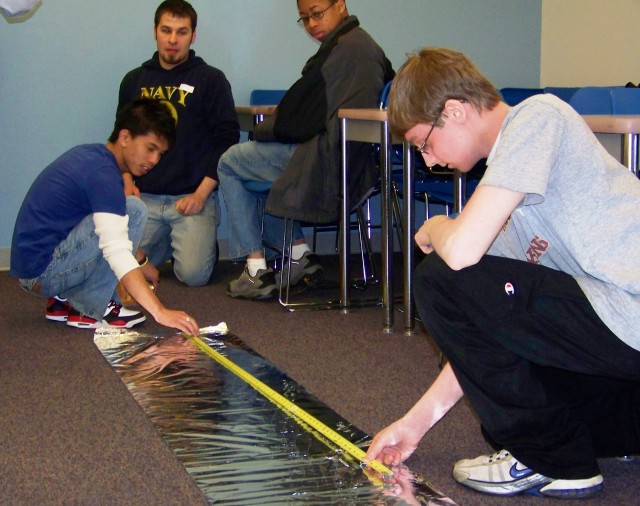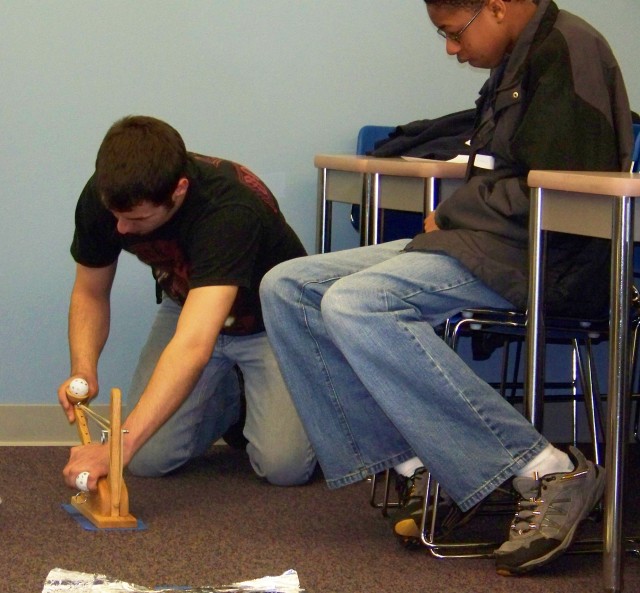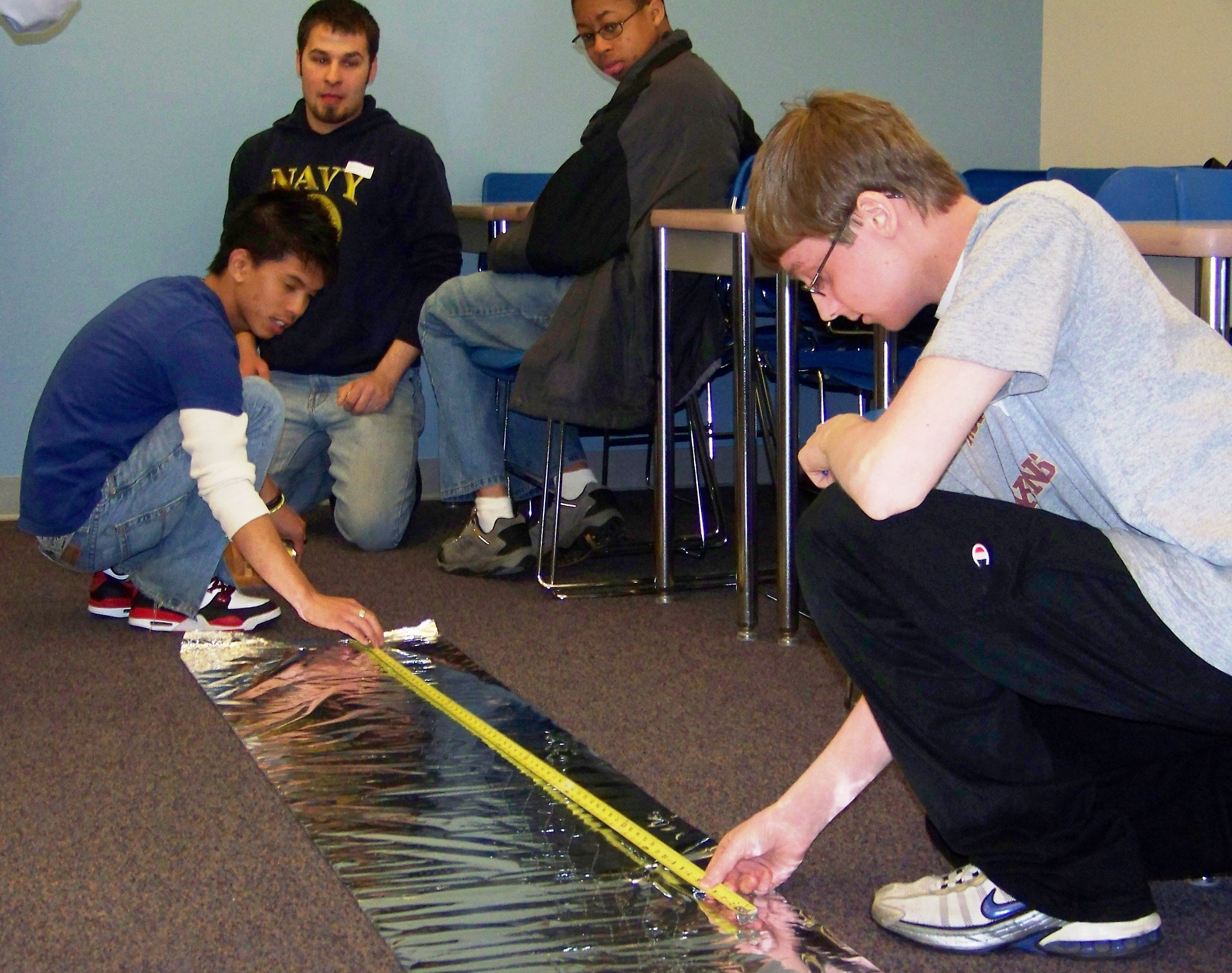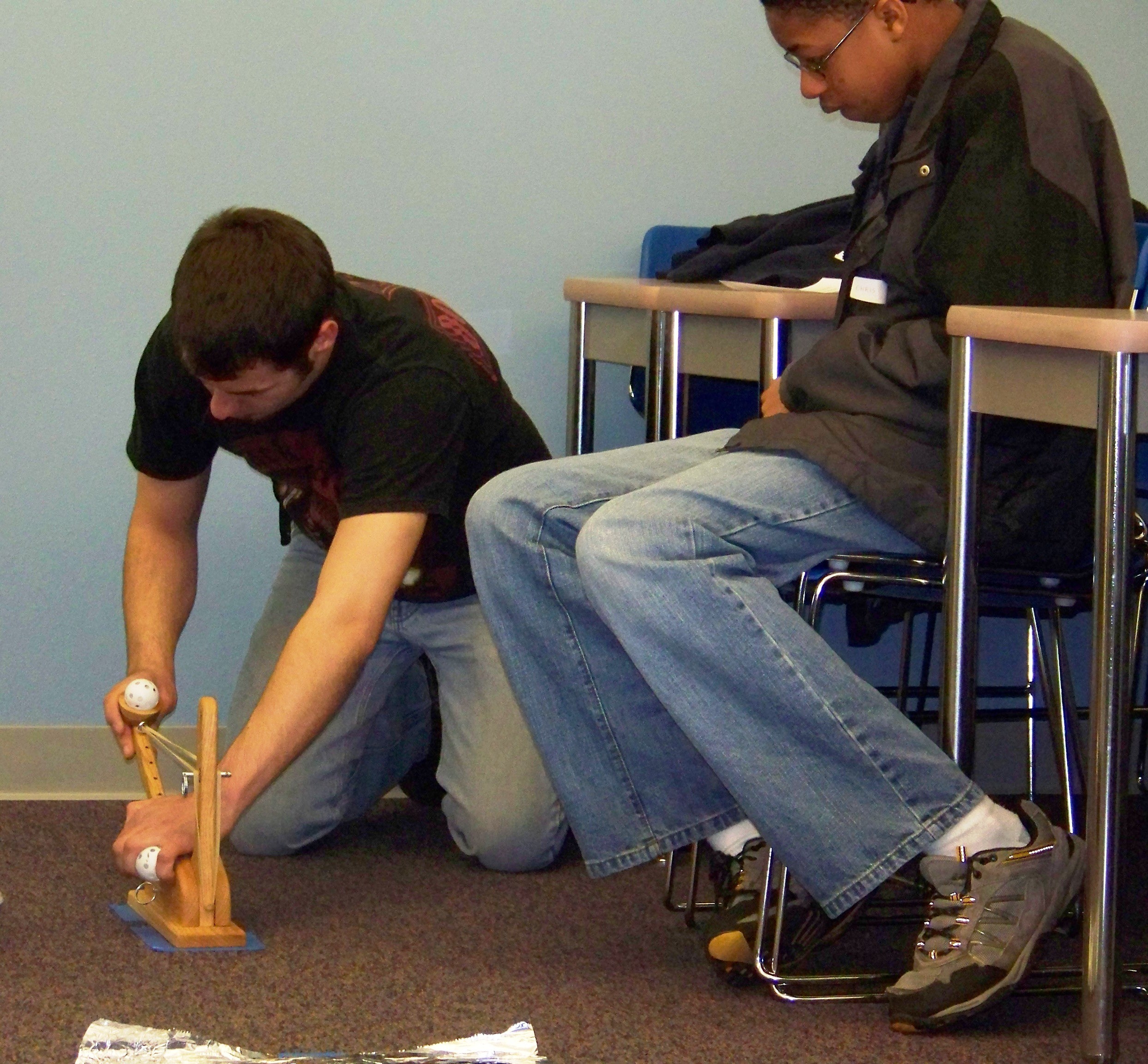Launching Whiffle balls to collect and analyze data may not sound like a serious engineering experiment, but Joint Munitions Command personnel showed students how it can have real world applications at STEM Career Day held at Scott Community College, Davenport, Iowa, on April 14.
Members of the JMC's Lean Six Sigma Program Office led a hands-on statapult experiment at the career day to help get local high school and college students interested in science, technology, engineering and math.
Walt Songaila, Lean Six Sigma deployment director at JMC, explained that the statapult exercise shows how science and engineering are applied.
"This is just a model but you could see how these same types of engineering principles and computer modeling would be used for fire control, tanks, mortars and in manufacturing environments," he said.
A statapult, a wooden catapult-like device, has several settings and users can manipulate the travel of the arm with pins and rubber band tension; this controls how far the ball shoots, Songaila said.
Twelve teams of students - - made up of shooters, measurers and recorders - - enthusiastically tackled the experiment.
Balls flew through the air landing on aluminum foil strips taped to the floor. Students were all business as they marked the balls' indentations, measured and recorded the distances of the eight predetermined settings with three shots per setting.
Excitement mounted during the second round as each team marked its target zones and launched three more balls based on computer analysis of their previous shots.
Team members grinned when the balls landed in the end zone and groaned when they missed.
During the final round, the top two teams held a shoot off, with the wining team getting two out of three shots into the zone.
"This is a lot of fun," said Tam Pham, a Davenport West High School student, who plans to study bio medical engineering.
Jimmy Black of Davenport North High School agreed. "I'm planning to go into engineering, and this has been a good experience."
Songaila noted the decline in the number of engineering students in the United States and the importance of developing them in this country.
"We're trying to show the kids that real people work at the Arsenal, and we do some exciting work. The work we do is for the betterment of the U.S.," he said.
Pat McIllece, Tad Holburn and Kathy Linderman of the JMC also coached the students on the statapult experiment.
Ann Lawler, math department coordinator, Scott Community College, Bettendorf, Iowa, and coordinator of the day's events, said that Eastern Iowa Community College District and St. Ambrose University partnered on a National Science Foundation Grant to increase the number of STEM majors in the area.
She said that 150 students from Davenport North, Davenport West, Davenport Central, Muscatine, and Rivermont Collegiate high schools and Scott and Muscatine Community Colleges attended STEM Career Day.




Social Sharing